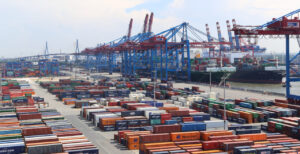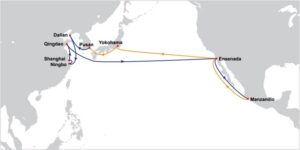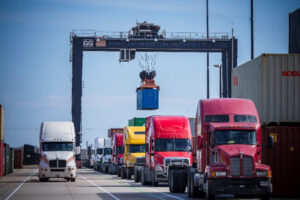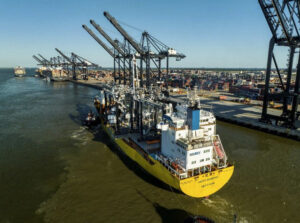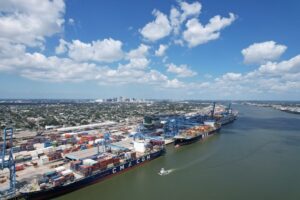Heat waves across Europe are increasing the risk of making the Rhine, the continent’s most important waterway, impassable for extended periods, according to German news outlet DW.
Last year, a combination of shrinking alpine glaciers and prolonged summer drought choked off the Rhine transport artery for nearly a month for the first time in living memory.
Last year’s shutdown shaved about 0.2% off Germany’s GDP and severely hampered cargo traffic. Experts claims those conditions could be repeated in the fall of 2019.
Extreme heat in July 2019 caused water levels at Kaub choke point to fall to 150 cm, half the depth from June, disrupting the heaviest barges transportation. All river cargo could cease if the level falls below 50 cm.
Exclusive Paper: Port of Rotterdam’s Stepwise Approach and Blockchain’s Role
According to a weather expert from the German river authority, quoted by the German media outlet N-TV, winter precipitation in the upstream area of the Rhine was below normal levels between November and June.
The Rhine is a critical to transport artery in the region connecting German and Swiss industry with Rotterdam, Europe’s largest port.
The threat of a repeat emergency has urged the German government into action as companies such as BASF asked for measures to improve the infrastructure along the key waterway.
In July, Transportation Minister Andreas Scheuer unveiled its 8 point action plan, which includes enhanced early-warning systems to help companies develop alternative transport options and several “building options” on the waterway’s critical infrastructures.

“We need to act to ensure that waterway transportation remains stable even under the conditions of climate change,” Scheuer said.
PTI has approached the Ports of Rotterdam and Hamburg for comment.
“In 2018 we had a very long low water period with very low waterlevels, which affected some great industries along the Rhine to a large extent. For the Port of Antwerp, this meant that more cargo went by rail and by truck instead of barge and more barges were needed to ship less volumes,” a spokesperson at the Port of Antwerp told PTI.
“The national waterway administrators are working on the deepening of the Rhine on certain critical points. In the future, barges will therefore be less impacted by these low water situations.
“In the short run, industries and transport companies are spreading their volumes over different transport-modes, meaning they will make more use of rail during the whole year, this way avoiding a complete transport stop because of low water situations.
“Next to this, industries are increasing their stock in certain moments of the year or are choosing barges designed with a low draft” the Port of Antwerp added.
Read More:


